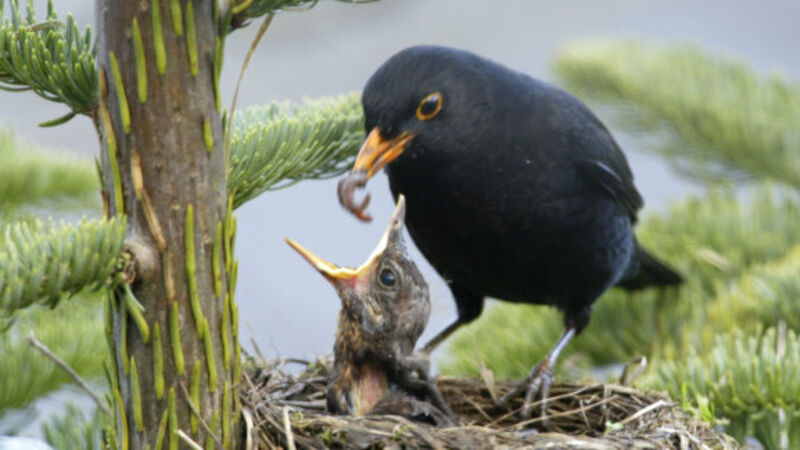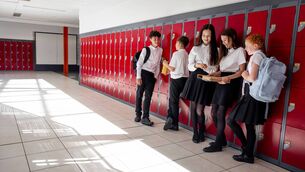The blackbird builds an incredible structure in a nest

I was sitting by the fire reading when the phone rang. It was a neighbour and she was in her car close to my front gate. A tree had just blown down blocking the lane and, because it’s a cul-de-sac, she was trapped, unable to get out to collect kids from school. I grabbed a weatherproof jacket and hurried out to the shed to fill the chainsaw with fuel and oil. Apart from considerations of good neighbourliness, the roots of the offending tree were on my property and the landowner is legally responsible for any damage his trees do.
Luckily it wasn’t a big tree, an old hawthorn, but the job was complicated by a dense entanglement of ivy. It took half an hour before I had it clear enough for my neighbour to complete her school run. Then, as I was dragging a massive clump of ivy off the road, out popped a bird’s nest.
It wasn’t a new nest, probably not even this year’s, but it was so strongly constructed that it remained totally intact as it bounced along the road. I examined it — an outer layer of fine twigs and stems, tightly and intricately woven together, then a layer of mud-based cement, then a lining of very fine grass. A blackbird’s nest.
These nests are made by the female bird, who moulds them around her own body, displaying incredible dexterity considering her only tool is her beak. Blackbirds normally rear two or three broods in a season. Sometimes a new nest is constructed for each brood and sometimes the one nest is used throughout a spring and summer. But nests that survive the winter are never repaired for use the following season. A new one is always built.
Nest building usually starts in March, although this depends to some degree on the weather. It has also been noted that birds living in suburban gardens build nests about a fortnight earlier than birds living in rural woodlands. Occasionally nest building and egg laying take place in the middle of winter in sites where artificial lighting or heating provide a micro-climate effect. Nests have been recorded in outdoor Christmas trees with powerful lights.
Normally three to five eggs are laid and they are blue-green in colour with russet brown spots. Only the better-camouflaged female incubates, though both sexes contribute to feeding the young. In gardens the main food items tend to be earthworms, and in woodland, caterpillars. The young fledge and leave the nest after about a fortnight and the parents, sometimes just the male, continue to feed and protect them for about three more weeks. After this the young birds usually leave the territory, though they are normally not driven out by the parents, who are probably busy preparing for the next brood.











